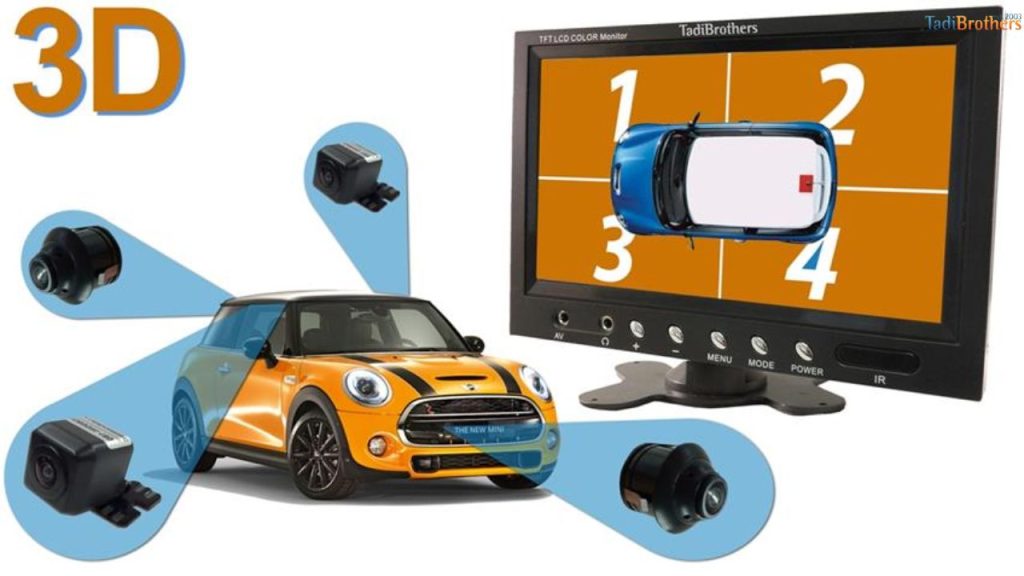Modern car safety systems protect drivers, passengers, and pedestrians with intelligent features that reduce accidents.
One of these innovations is the backup camera system, which has become a trusted safety feature in today’s vehicles. It helps drivers see clearly behind the car, prevents collisions, and saves lives every day.
Read below and find out how backup cameras work, their legal importance, and how they fit within advanced car safety systems designed for modern driving.
The Importance of Backup Cameras in Modern Vehicles

Almost all new cars now require backup camera systems as an important feature. The National Highway Traffic Safety Administration (NHTSA) made them mandatory for new vehicles sold in the United States starting May 1, 2018.
This rule is part of the Federal Motor Vehicle Safety Standard No. 111 (FMVSS No. 111). It aims to help drivers see clearly behind their vehicles and prevent accidents with children, pedestrians, or other obstacles.
The rule came after years of research showing hundreds of deaths and thousands of injuries each year from back-over accidents. Many of these victims were small children or older adults who were not visible from the driver’s seat.
A backup camera system helps you to have a clear view of the rear area. This reduces tragic incidents and makes reversing safer for everyone.
How a Backup Camera System Works

A backup camera is mounted on the back of the vehicle, usually near the license plate, also known as the license plate backup camera. When the driver shifts into reverse, the camera automatically turns on and displays a live video on the dashboard screen.
This view helps drivers spot obstacles, people, or pets behind the vehicle. Most systems also include guidelines that show the car’s projected path and distance markers for easier parking.
There are many backup camera systems that have advanced features. These systems provide sharper images, wider angles, and better visibility in dark areas. Many drivers prefer these digital systems because they are easier to install and work well even at night.
Why Every Driver Should Have a Backup Camera
Having a backup camera system provides several practical benefits for daily driving.
- Improves Rear Visibility: It provides you better visibility and removes blind spots behind the vehicle, showing what mirrors often miss.
- Prevents Accidents: The backup system also helps drivers avoid hitting obstacles, especially in crowded parking lots or driveways.
- Simplifies Parking: The camera makes parallel or reverse parking easier and faster.
- Reduces Repairs: helps you avoid small bumps and scrapes and saves money on maintenance.
- Enhances Night Safety: You can also have better vision during nighttime. These digital cameras often include low-light sensors or infrared lights for better night vision.
If you don’t have the camera system yet, you can install a backup camera system through auto shops or check out TadiBrothers. Installation is quick and adds lasting safety value to your car.
Check: How to Install a Wireless Backup Camera System | Easy Step-by-Step Tutorial by TadiBrothers
Other Important Car Safety Systems
While backup cameras handle rear visibility, other safety systems protect you in different driving conditions. Together, they form a complete safety network inside modern vehicles.
Anti-lock Braking System (ABS)
ABS prevents the wheels from locking during hard braking, helping you stay in control on slippery roads.
Electronic Stability Control (ESC)
ESC keeps the car stable during sudden turns or lane changes, reducing the risk of skidding.
Automatic Emergency Braking (AEB)
This system detects a possible collision and automatically applies brakes if the driver doesn’t react in time.
Lane Departure Warning (LDW)
LDW alerts you when the vehicle drifts out of its lane without signaling.
Blind Spot Detection (BSD)
BSD monitors areas beside the car and warns if another vehicle is in your blind zone.
Each of these features works with the backup camera system to give drivers full awareness of their surroundings.

The Future of Car Safety Systems

There are several new car safety systems that use radar and advanced cameras to improve driver awareness even in the tightest spots. Some of the features are the 360-degree surround-view cameras, combining several lenses for a complete top-down image of the car’s surroundings.
Moreover, Vehicle-to-Vehicle (V2V) technology will let cars share real-time safety data to avoid collisions. The backup camera systems will not only show what is behind you but will also warn you of approaching traffic or moving objects.
Final Thoughts
A backup camera system is more than just a camera. You get a whole camera system that is a life-saving feature that every driver should have.
These cameras improve visibility, reduce stress, and help prevent tragic accidents. Combined with modern car safety systems like lane assist, ABS, and stability control, it creates a safer road for everyone.
If your vehicle doesn’t come with a built-in backup camera, you can easily install an aftermarket camera system and get the same safety benefits as newer cars. Adding one now helps you and your loved ones drive with more confidence and peace of mind.
